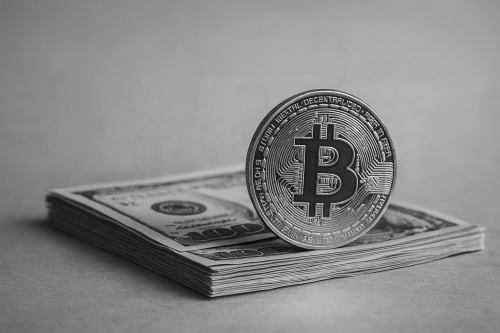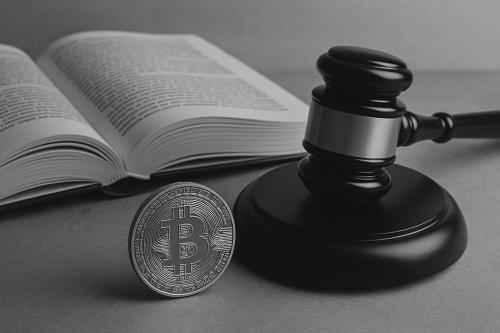Keeping Europe safe means keeping up with corruption and financial crime threats

Two recent EU publications underscore the central role of corruption and money laundering in enabling organised crime and threatening security – and how essential it is to invest more in efforts to investigate, seize and confiscate criminal assets.
Europol’s 2025 Serious and Organised Crime Threat Assessment (SOCTA) painted a sobering picture of how organised crime is “evolving at an unprecedented pace”, with corruption and money laundering as key enablers.
The SOCTA, among other inputs, informed the new European internal security strategy, ProtectEU. This equally sobering document sets out how the EU needs to involve all of society in tackling threats to security including organised crime, cybercrime and terrorism. It urges the rapid passing and implementation of the EU Anti-Corruption Directive and emphasises that “seizing assets and confiscating criminal gains is essential.”
What does this mean in practice for anti-corruption and asset recovery in Europe?
SOCTA: three factors driving organised crime’s transformation
The SOCTA is an intelligence-driven report that evaluates the impact of serious and organised crime on society. Published every four years, it is essential in shaping the EU’s criminal priorities.
This year’s assessment points to a profound transformation that “is making organised crime more dangerous, posing an unprecedented challenge to security across the EU and its Member States”.
The report reveals how organised criminal groups increasingly destabilise society. This includes by collaborating with so-called hybrid threat actors that seek to undermine European stability and institutions in order to achieve their economic or political objectives. For example, criminal networks can further the agendas of hybrid threat actors through orchestrated ransomware attacks on critical infrastructure, businesses and government agencies.
Again, corruption exacerbates this destabilisation effect by enabling criminal networks to evade justice, undermine good governance, consolidate power and expand their operations. The ease of laundering illicit money also enables organised crime groups to bridge “the gap between the licit and illicit worlds”.
Second, criminal networks increasingly benefit from shifting their operations online. Digital infrastructure like the dark web, social media and e-commerce platforms make it easier for them to recruit individuals, market their illicit services, buy and sell products, conduct financial transactions, communicate via encrypted platforms and identify targets and victims.
Third, the report highlights how new technologies – such as artificial intelligence and blockchain-based technologies such as crypto – act as catalysts for organised crime. Cyber-enabled fraud schemes have reached unprecedented levels and are expected to keep growing. Going forward, such technologies will continue to increasingly “drive criminal operations’ efficiency by amplifying their speed, reach, and sophistication”.
Parallel financial underworld grows; asset recovery remains low
The SOCTA highlights the evolving nature of money laundering techniques, emphasising that these “serve as crucial components of a parallel financial criminal underworld” circumventing anti-money laundering regulations.
Cryptocurrencies, non-fungible tokens (NFTs), decentralised finance (DeFi) platforms and AI-driven automation now facilitate greater anonymity and complexity in the money laundering process. As a result, even if illicit transactions are detected, the money may still disappear before it can be seized – and the individuals laundering the money may remain unknown.
These newer methods complement the existing – but still growing – use of cash-intensive businesses such as restaurants to launder illicit funds.
The enhanced capability of organised crime groups to hide their proceeds therefore contributes to “an alarmingly modest level of approximately 2%” confiscation rate of criminal proceeds.
Innovation to tackle evolving corruption risks
This complex and evolving landscape of organised crime and security threats demands a multi-faceted approach. And addressing corruption and enhancing asset recovery are a crucial part of that.
Innovation will help. Just as criminals take advantage of increased access to data and digital technologies, so we – governments, law enforcement, citizens, business – need to leverage data and digital tools effectively.
That kind of research and innovation is a major goal of the EU-funded FALCON research project to which the Basel Institute is contributing. A 2025 Policy Brief distills concrete insights and red flags from an analysis of 63 corruption cases, for example. This research will help policymakers to develop measures to identify and proactively address weaknesses in legal and administrative procedures that increase corruption risks.
In terms of tools, automated corruption risk assessment platforms could help law enforcement analyse data more efficiently and to uncover corruption patterns and new leads. Digitalisation can also help to minimise the discretion of public officials, for example at borders or in public procurement processes.
Meanwhile, sophisticated tools and methods for blockchain analytics can help trace illicit crypto flows and to uncover the individuals and networks behind the transactions.
Enhancing asset recovery: laws, investigations, coordination
As highlighted by the SOCTA, “asset recovery is a powerful deterrent and an effective tool to tackle serious and organised crime”, because it cuts off criminal networks from their resources and prevents them from using these funds to undertake further criminal activity.
From nearly two decades of experience of the Basel Institute’s International Centre for Asset Recovery (ICAR), we can say that improving success rates in asset recovery demands a comprehensive approach to enhancing confiscation mechanisms, financial investigations and coordination.
In terms of asset recovery legislation, there are well-documented good practices. For the EU specifically and in the context of sophisticated methods to conceal illicit wealth, we would highlight the need to maximise non-conviction-based and unexplained wealth confiscation mechanisms. When well drafted and implemented, these are especially effective in targeting assets links to organised crime or corruption that are difficult to trace back to specific illegal activities.
Financial investigations are crucial to identify criminal assets, but not all financial investigations are the same. For example, investigating financial flows involving crypto requires specialist skills and analytical tools, as well as rapid, proactive collaboration with private-sector crypto asset service providers. In contrast, financial investigations involving predominantly cash or unregulated remittance methods such as hawala banking require the use of more traditional investigative methods, such as surveillance, searches and witness interviews.
Coordination could be improved through the use of multi-agency asset recovery task forces. These harness the expertise, resources and legal mandates of law enforcement, prosecutors, asset recovery offices and financial intelligence units, among others, and ensure a coordinated approach to recovering illicit assets. Meanwhile, public-private partnerships can help enhance the sharing of financial intelligence – thus closing the gap between the detection of money laundering and the enforcement of freezing measures.
Building defences against corruption and illicit finance
Organised crime will continue to exploit regulatory loopholes and rapidly adapt to evolving legal and technological landscapes. In the current geopolitical landscape, we are glad that European institutions are taking a fresh look at the links between corruption, organised crime and security.
At the Basel Institute we will continue to support our partners in governments, international organisations, the private sector and civil society to, among other things:
- improve the effectiveness of anti-money laundering systems as new forms of financial crime evolve;
- address weaknesses in regulatory frameworks and gaps in the effective implementation of rules and laws; and
- improve all stages of the asset recovery chain, from detection and tracing to recovering criminal assets.




